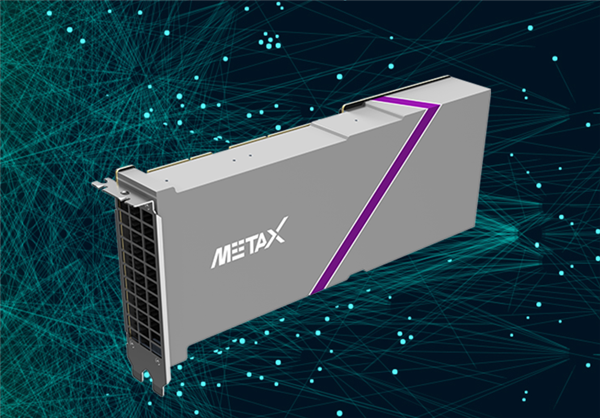Huang Renxun Claims NVIDIA Exits China Market! Huawei, Muxi, Moore Threads and Other Domestic GPUs Take Over
Fast Technology reported on October 26th."NVIDIA's market share in China has plummeted from 95% to 0, and we have now completely withdrawn from the Chinese market."
Recently, in an event organized by Citadel Securities, NVIDIA CEO Jensen Huang delivered a striking speech.
Before 2022, NVIDIA relied on its leading GPU architecture and mature CUDA ecosystem, achieving nearly 100% market share in China's large model training chip market, effectively monopolizing this field.
"We (the United States) have implemented policies that have caused the U.S. to lose one of the largest markets in the world," Huang Renxun admitted.
Previously, Jensen Huang also predicted that the scale of the artificial intelligence market in China will reach approximately $50 billion in the next two to three years.
With NVIDIA's exit from the Chinese market, domestic GPU manufacturers have begun to take up the baton and fill the market gap.
In the current domestic market, domestic AI chip manufacturers have demonstrated diversified breakthrough directions.There are chip design companies focused on general-purpose computing architectures (GPU) such as Moore Threads, Hygon, Tianshu Zhixin, and Biren Technology, as well as those dedicated to specialized computing architectures (ASIC/DSA) such as Huawei Ascend, Cambricon, Kunlunxin, and Suiyuan Technology.
It is understood that,Huawei Ascend, with its years of technological accumulation and ecological advantages, has become a major alternative in the high-end market.The Ascend 910 chip under its umbrella has already entered the training phase of large AI models for domestic internet companies, and the actual application effects are gradually emerging.
Companies such as Cambrian and Haiguang Information have made significant breakthroughs in their respective niche areas.
The Cambrian Siyuan 590 chip supports mainstream deep learning frameworks and achieves approximately 80% of the performance of the NVIDIA A100 in scenarios such as visual processing and language models. It has already partnered with leading algorithm companies such as Zhixiang Future and Baichuan Intelligence, providing stable computing power support for search services and advertising recommendation systems of major internet companies.
Besides Huawei Ascend and Cambricon, the development of Moore Threads is also worth noting—the company has developed four generations of GPU architecture and has derived more than ten chips based on them.
These chips have a wide range of applications, covering three major areas: artificial intelligence computing, professional graphics processing, and desktop-level graphics acceleration, addressing the needs of different scenarios.
Muxi Technology focuses on the development of "integrated training and inference" GPU chips. As of the first quarter of 2025, the cumulative sales of the company's GPU chips have exceeded 25,000 units, and products have been successfully delivered to nine major intelligent computing clusters in cities such as Beijing, Shanghai, and Hangzhou, with smooth progress in application deployment.
Not long ago, Muxi Integrated Circuit (Nanjing) Co., Ltd. publicly launched its first domestically produced general-purpose GPU, the Xiyun C600, in Nanjing. This move marks a historic breakthrough in the realization of domestically produced high-performance GPUs.
According to public information, the Xiyun C600 is built on the core GPU IP with independent intellectual property rights from Muxi, and it has achieved a closed-loop domestic supply chain covering the entire process from chip design, manufacturing to packaging and testing. Its large-capacity video memory, combined with multi-precision mixed computing power, can provide secure and controllable computing support for the development of the digital economy, ensuring the autonomy and control of the industrial chain.
According to market data, IDC statistics show that in 2024, domestically developed AI chips in China have already risen to a 30% share of the domestic market. It is expected that by 2025, this proportion will exceed the 50% mark, and the market influence of domestic chips is rapidly increasing.
Industry insiders have pointed out that it won't be long before the usage ratio of domestic computing chips surpasses that of overseas chips. Currently, the usage proportions of the two are almost fifty-fifty, and the acceptance of domestic chips is growing increasingly higher.
However, some believe that the biggest constraint currently faced domestically is still advanced wafer manufacturing processes. Fortunately, in terms of chip design, the technological gap is not significant. Although the software ecosystem still lags behind CUDA, there are no technical limitations in this area. Therefore, as long as sufficient resources are invested subsequently to gradually improve the ecosystem, it can slowly catch up.

【Copyright and Disclaimer】The above information is collected and organized by PlastMatch. The copyright belongs to the original author. This article is reprinted for the purpose of providing more information, and it does not imply that PlastMatch endorses the views expressed in the article or guarantees its accuracy. If there are any errors in the source attribution or if your legitimate rights have been infringed, please contact us, and we will promptly correct or remove the content. If other media, websites, or individuals use the aforementioned content, they must clearly indicate the original source and origin of the work and assume legal responsibility on their own.
Most Popular
-

List Released! Mexico Announces 50% Tariff On 1,371 China Product Categories
-

Nissan Cuts Production of New Leaf EV in Half Due to Battery Shortage
-

New Breakthrough in Domestic Adiponitrile! Observing the Rise of China's Nylon Industry Chain from Tianchen Qixiang's Production
-

Dow, Wanhua, Huntsman Intensively Raise Prices! Who Controls the Global MDI Prices?
-

Mexico officially imposes tariffs on 1,400 chinese products, with rates up to 50%






